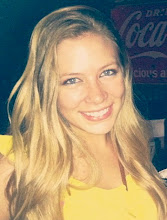Chapter 4: Picturebooks: Beyond Words and Illustrations
While reading this chapter, I was thinking of all the picture books I read when I was young, and realized how much I love them and how much they have impacted me. The whole role of pictures books is for the student to enjoy a book, while gaining visual literacy and meaning in pictures. The author does not have to tell the whole story, because the pictures show meaning to what the author leaves out. A student can gain critical thinking skills by analyzing a picture to understand what an author means.
There are many categories of picture books including:
Mother goose stories that teach a lesson or moral
Concept books that are informational picture books
Alphabet books that help students connect letters with objects
Counting book that show numbers, calendars, and seasons
Wordless picture books that use solely pictures
Toy books that use flaps, pop ups, and textured pages
Pop-up books that use constant three dimensional structures
Easy to read books that have simple sentences
Picture story books that integrate words and pictures
Postmodern picture books invite the reader to coauthor the text
Selecting the appropriate picture book is similar to every other type of book. The book should be accurate, intriguing, appropriate, engaging, and the illustrations should expand the text. There are many different physical characteristics that accompany a variety of picture books. The size and shape may vary. Historically, a picture book was small enough to find inside a grandmothers pocket. Also, texture of the pages will vary. But, glossy and shiny pages are distracting and not best suited for younger readers/listeners. More roughly textured pages make the book less distracting.
I think that picture books can be incorporated in all grades. Although they may not like to admit it, many high schoolers still reminisce about the picture books they read when they were young. Incorporating them into a lesson can allow the students to relax and enjoy a picture book that may pertain to what they are learning.

No comments:
Post a Comment